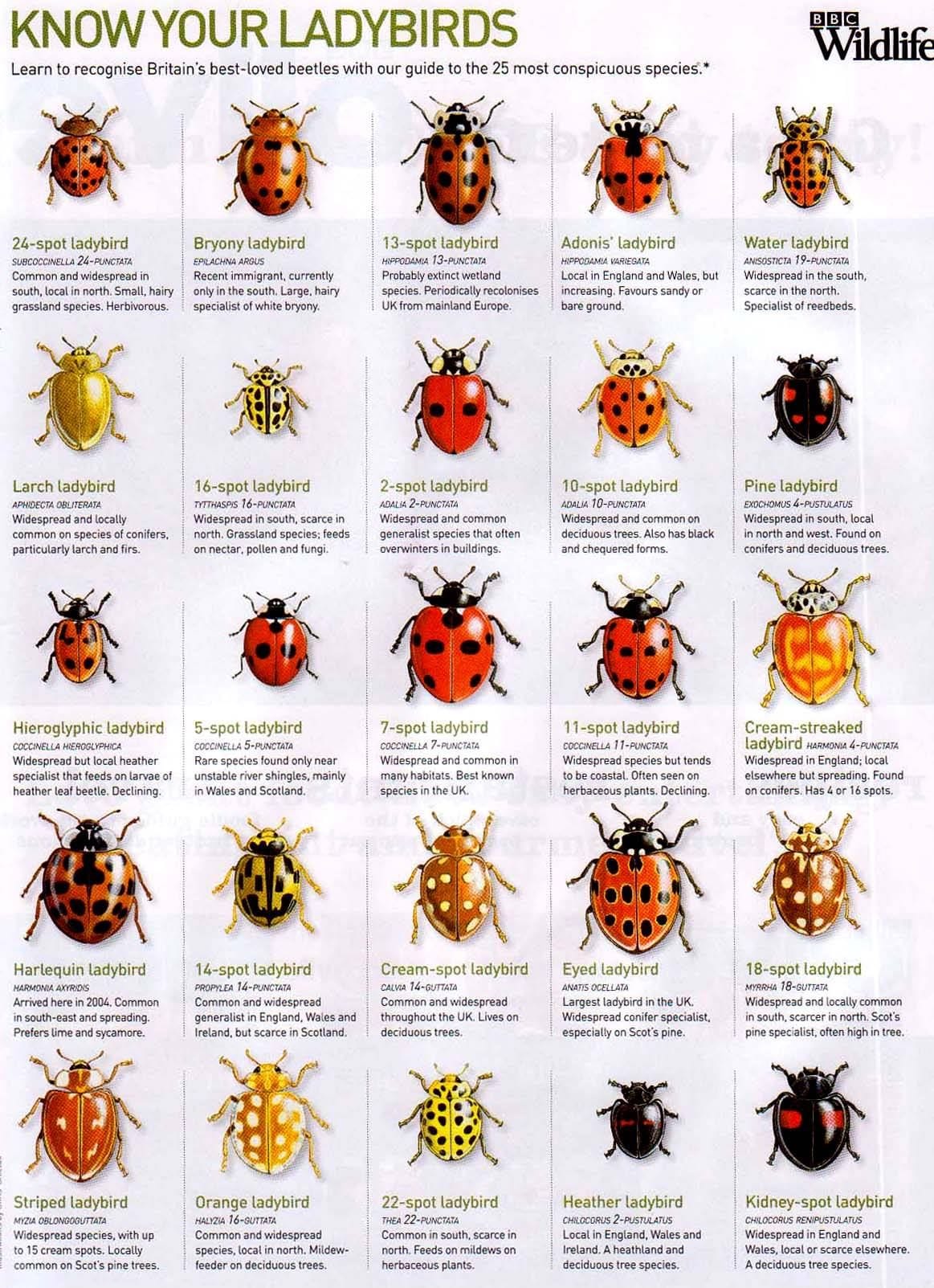Ladybirds, also known as ladybugs or lady beetles, are captivating insects that often grace our gardens with their presence. But beneath their charming exterior lies a world of fascinating facts and ecological importance. This comprehensive guide delves into the lives of these vibrant beetles, exploring their life cycle, behavior, ecological role, and cultural significance. Join us as we uncover the secrets of these miniature marvels.
Decoding the Dazzling Diversity of Ladybirds
Ladybirds are instantly recognizable, yet surprisingly diverse. While the classic red dome with black spots is a familiar image, the world of ladybirds boasts over 5,000 species, each with its own unique flair. From vibrant yellows and oranges to striking blues and even iridescent hues, these beetles showcase nature’s artistry. Some sport stripes, squiggles, or even no markings at all. In the UK alone, 47 species are believed to exist, though the iconic seven-spot ladybird remains a common sight. Another frequent visitor to UK gardens is the two-spot ladybird. These tiny creatures, typically measuring 8-10mm, are a testament to the incredible variety within the insect world. [If you’re a fan of the classic children’s song “Kookaburra Sits in the Old Gum Tree,” you can find the lyrics here.]
Appearance: Nature’s Tiny Masterpieces
Contrary to popular belief, a ladybird’s spots are not an indicator of its age. Rather, these markings, along with the beetle’s color and shape, act like fingerprints, distinguishing the many different species. Some species exhibit consistent spot patterns, while others display remarkable variation. This can make identification a fun challenge, turning anyone into an amateur ladybird detective! The vibrant colors themselves serve a vital purpose – they are often a warning signal to potential predators, advertising their unpalatability. This defense mechanism, known as aposematism, is a common strategy in the natural world.
Life Cycle: A Transformation Story
Like butterflies, ladybirds undergo a complete metamorphosis, a remarkable transformation from egg to adult. The journey begins with a tiny egg, which hatches into a rather peculiar-looking larva. Resembling miniature alligators, these larvae have a voracious appetite, primarily feasting on aphids – those tiny green bugs that can plague our gardens. After molting several times, the larva transforms into a pupa, a seemingly lifeless shell where the magic happens. Finally, the pupa splits open, revealing a fully formed adult ladybird, ready to take flight. This entire cycle, from egg to adult, typically takes about a year, influenced by species and environmental conditions.
Ladybirds in the Garden: Nature’s Pest Control
Ladybirds are invaluable allies in the garden, acting as natural pest controllers. Their insatiable appetite for aphids makes them incredibly effective at keeping these plant-damaging insects in check. A single ladybird can devour up to 50 aphids in a day, a feat that significantly reduces the need for harmful chemical pesticides. Attracting ladybirds to your garden can be achieved by planting certain flowers and herbs, creating a haven for these beneficial insects. Some research suggests that diverse plantings and a water source can encourage ladybirds to make your garden their home. This natural approach to pest management promotes a healthy and balanced ecosystem, benefiting both plants and the environment.
The Harlequin Ladybird: A UK Case Study
The UK’s ladybird population faces a unique challenge: the Harlequin ladybird, an invasive species that competes with native ladybirds for resources. This newcomer, with its highly variable appearance, can be difficult to distinguish from native species. Understanding the Harlequin ladybird’s impact is crucial for conserving the UK’s diverse ladybird fauna. The ongoing research into this dynamic sheds light on the complex interactions within ecosystems and the challenges posed by invasive species.
Climate Change and Ladybirds
Climate change is another emerging concern for ladybird populations worldwide. Shifting weather patterns and rising temperatures may influence ladybird distribution, life cycles, and food availability. Scientists are actively studying these impacts to understand how ladybirds are adapting and what conservation efforts might be necessary to protect these vital insects.
Beyond the Garden: Cultural Significance and Ongoing Research
The name “ladybird” itself has a rich history, believed to be linked to depictions of the Virgin Mary in a red cloak. This association likely contributed to the widespread belief that ladybirds are symbols of good luck, protection, and prosperity. In many cultures, finding a ladybird is considered a positive omen, adding to the charm of these already captivating creatures. [If you’re a fan of the classic children’s song “Kookaburra Sits in the Old Gum Tree,” you can find the lyrics here.]
While much is known about ladybirds, there’s always more to discover. Ongoing research continues to unveil new insights into their behavior, genetics, and the complex roles they play in our world. From exploring the biological mechanisms behind their vibrant colors to understanding the long-term impacts of climate change, scientists are constantly working to unravel the mysteries of these tiny but mighty creatures.
Frequently Asked Questions:
| Question | Answer |
|---|---|
| What do ladybirds eat? | Primarily aphids, but also other small insects like mites and scale insects. |
| Are ladybirds poisonous? | Not to humans. They can release a yellowish fluid when threatened, which tastes unpleasant and can stain, but it’s not poisonous. |
| How long do ladybirds live? | Typically 1-2 years, but some species can live up to 3 years. |
This guide aims to provide a comprehensive overview of the fascinating world of ladybirds. While we’ve covered a significant amount of information, it’s important to acknowledge that scientific understanding is constantly evolving. Further research may reveal new and exciting details about these captivating creatures in the years to come.






![Saving the [Example of Endangered Species in Pakistan]: A Call to Action for Conservation Efforts example-of-endangered-species-in-pakistan_2](https://www.lolaapp.com/wp-content/uploads/2023/12/example-of-endangered-species-in-pakistan_2-150x150.jpg)





